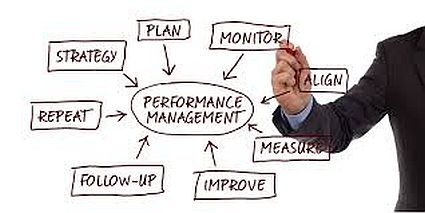Perhaps I’ve not been paying attention. Recently, in conversations with clients and other groups, I’ve been stunned at how few have performance plans in place for their people. Having been raised in organizations that valued performance planning, I had assumed these were common place.
Starting my selling career in IBM, we all had them. Much later, when IBM was a customer, in calling on people, I would always ask, “Open your lower right hand drawer and pull out the first folder. I’d like to look at your performance plan….” (We all seemed to keep them in the same place.) Knowing how each person’s performance was being measured helped me more effectively connect with them.
Today, sellers have quotas and perhaps a few goals, but I run across few organizations that have formal performance planning processes. When I ask executives about it, the respond, “They have their quotas, that’s all we care about!!!”
Usually, I respond, “How do they know what your expectations are for their performance, other than meet goal? How do they know if they are doing well or not? After all, achieving quota is a historical goal. Neither you nor they know if they are doing the things critical to achieving quota.”
Performance plans and planning are critical to both managers and their people. The process helps each understand the expectations of the other. These plans help each assess whether we are doing our jobs and achieving our goals.
Developing the performance plan is a collaborative effort. It should be unique to each person, not a standard document you pull from a Google Docs folder. It should outline key performance expectations, setting goals. For example, expectations around prospecting, or pipeline development. It should outline expected behaviors, for example how customers are engaged or treated, expectations of teamwork within the organization. It should outline skills and career development goals. There are some common standards, for instance updating CRM, ethical behaviors, even “showing up.” It should outline expectations the manager and the seller have of each other in terms of support, development, coaching.
Performance plans become a roadmap to success. It’s critical, periodically for managers and their people to review what progress is being made. To discuss where things are going well, to identify where someone might be off course, determining what might be done to get the person back on course.
Our jobs as leaders is to maximize the performance of each person on our team. But if we don’t have a plan that both we and each person understands, we have no way of doing that. We are either reacting to the latest challenge or wandering aimlessly. Neither is helpful to maximizing the performance of our people.
It doesn’t have to be long or complex. In fact, there are usually a few critical areas. It can’t be only about making quota, there is so much more to a job then making quota. And, to assure ownership by leaders and each person, they should be developed collaboratively.
Do each of your people have a documented performance plan, developed collaboratively? Do each of you clearly understand expectations and your roles in meeting them?
Do you have a performance plan you have developed with your manager?
Afterword: Reflecting back on my comment about how I engaged people at IBM, I do something similar with each client. We discuss their performance goals, how they are being measured, the expectations of maximizing their success. Once I understand that, I do everything I can to support them in achieving this.

Leave a Reply